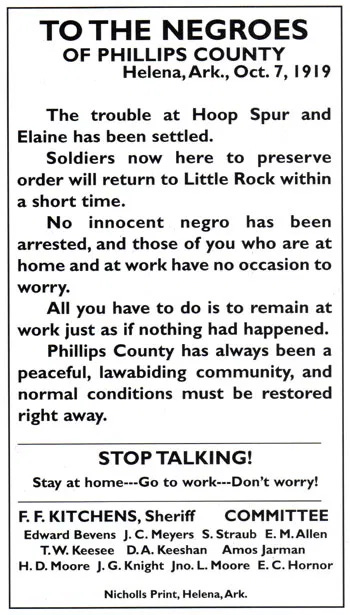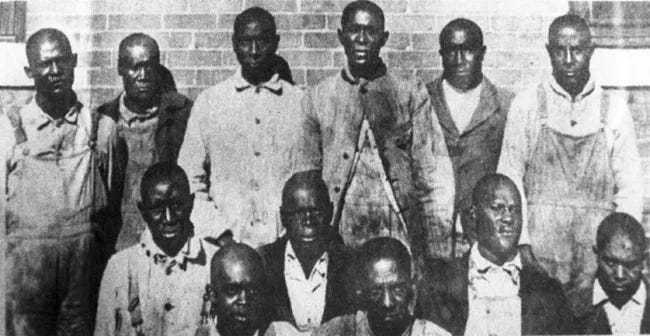“But somewhere I read of the freedom of assembly. Somewhere I read of the freedom of speech. Somewhere I read of the freedom of press. Somewhere I read that the greatness of America is the right to protest for right.” — Dr. Martin Luther King, Jr.
DONALD TRUMP HAS basically punished the city of Los Angeles for standing up to his anti-democratic ICE raids and illegal deportation actions that are designed as Fascist scare tactics against people who may or not have their papers yet. But these people are factors in the well-being of this country. They are living hard-working, productive lives while contributing to our tax base—cleaning our houses, raising our children, building our buildings, manicuring our lawns, working our farms, cooking our food. And many are in the process of being documented but are now being ambushed at their hearings.

Not even Hitler’s Gestapo covered and hid their faces while they coordinated the deportation of Jews from across Europe to ghettos, concentration camps, and extermination camps. In a letter from the ACLU on June 10th:
“…in just the past week, the Trump administration has aggressively arrested people protesting ICE's cruelty, deployed thousands of federalized National Guard troops to Los Angeles, and now has sent hundreds of active-duty Marines there, too.
And he's threatened that it won't end here. On Sunday, Donald Trump said, "We're gonna have troops everywhere." To be clear: If we don't stop this abuse of power now, Los Angeles will not be the only target.
President Trump is trying to write himself a blank check to use the military to stifle dissent and scare us into silence. It's unnecessary, it's dangerous, and it's wrong.
WE’VE SEEN OTHER abuses of military power over the decades, but one that most Americans don’t know about is arguably the bloodiest racial confrontation in U.S. history—the 1919 Elaine (Arkansas) Massacre.
A 2011 documentary, The Elaine Riot: Tragedy & Triumph, funded by the Winthrop Rockefeller Foundation and narrated by Ossie Davis, concisely explains what happened. “We are certain that a reign of terror against the Black population of that part of Phillips County took place,” says historian Michael Dougan. “We are certain that machine gun crews went out looking for people to gun down. We are certain that Blacks were brought into, in effect, concentration camps and held in all violation of all the laws of the state of Arkansas.”
Elaine is in the heart of the Arkansas Delta, near the once-thriving port city of Helena, but, like most of the Delta, that area is now struggling to survive. Phillips County is known for its rich farmland—Mississippi River Bottom Land—and in the early part of the last century, cotton was king. Following the Civil War, plantation landowners depended on sharecroppers to farm their fields instead of slaves.
But WWI took many Americans—including Black soldiers—to Europe, where they fought for a democratic way of life. When these soldiers returned home, they brought with them a different attitude. The world had changed, and they were ready to fight for their rights here as well. Whites were astounded and reacted violently. The summer of 1919 became known as the Red Summer in America, because of all the blood flowing in the streets from race riots happening in cities across the country.
Whether white or Black, sharecroppers could not get ahead—the landowners made sure of that, and especially so if they were Black. The sharecroppers were supposed to get half of the cotton crop they’d grown and harvested, but the landowners usually cheated them out of that. These meager wages would have provided them the ability to save something for a better, more independent life. Another key factor in this process were the “company stores,” owned by the landowners, who often mandated that sharecroppers who farmed their land also patronize their company stores for farming equipment, supplies, food, and personal items. As they typically received payment for their crops only once a year, sharecroppers frequently relied on credit to purchase goods. On top of that, the company stores often charged inflated prices for goods and imposed excessive interest rates on these credit purchases. This system, combined with unpredictable harvests and potential crop failures, often trapped sharecroppers in a cycle of perpetual debt.
This, then, was the situation on September 30, 1919, when a small group of Black men and women near Elaine, Arkansas, in a community called Hoop Spur, began taking action to get paid for their labor by their oppressors, and to receive their fair share of the crop they’d produced. The sharecroppers were trying to unionize with The Progressive Farmers and Household Union of America to sue their landlords for money owed them for crops and to get an itemized accounting for their charges at the store.
According to the Encyclopedia of Arkansas …
Leaders of the Hoop Spur union had placed armed guards around the church to prevent disruption of their meeting and intelligence gathering by white opponents. Though accounts of who fired the first shots are in sharp conflict, a shootout in front of the church on the night of September 30, 1919, between the armed Black guards around the church and three individuals whose vehicle was parked in front of the church resulted in the death of W. A. Adkins, a white security officer for the Missouri-Pacific Railroad, and the wounding of Charles Pratt, Phillips County’s white deputy sheriff.
Ten people were killed, but it was the white security officer’s death that instigated a massive reprisal, with whites claiming that Elaine Blacks were staging an insurrection and planning to kill all the white people in Phillips County. A sheriff sent out a call in Arkansas and across the river to Mississippi that the white people of Phillips County were under severe attack, and they needed help. An estimated 500 to 1,000 armed white people/lynch mobs answered the call as Ossie Davis says in the above documentary, “To hunt Mr. N***** in his lair.” They fired at every Black person they saw, including women and children.
Phillips County authorities asked Arkansas governor Charles Hillman Brough to bring in U.S. troops, and Brough sent more than 500 battle-tested troops from Camp Pike, outside of Little Rock (Pulaski County). They officially restored order but only after using WWI machine guns to mow down what well may have been hundreds of Black citizens. When the shooting ended, the official numbers varied from two deaths to five white men and 25 Blacks killed. But truer estimates vary from 100 to 800 dead. It was a slaughter. Victims’ bodies were thrown into the Mississippi River or left in the canebrakes along it. The stench was said to be terrible for miles.
The White Establishment charged that the Blacks “were in a secret conspiracy to rise up to overthrow the white power structure and the land-owning class in Eastern Arkansas,” said historian Tom Dillard. And since white men were killed, the inevitable racist result was that Black men had to die for that crime. Hundreds of Black men were detained. Sixty-seven were sent to prison. Twelve were tried by an all-white jury for the white murders. A mob surrounded the court with the expectation that if the Black men were not sentenced to death, the mob would lynch them. The attorneys who were representing these men hadn’t even talked to their clients. It was later proven that some Black men had been tortured until they blamed some of those charged.
The Elaine 12. Courtesy of the Butler Center for Arkansas Studies, The Central Arkansas Library System
“There’s always been the effort of the establishment in the South to maintain that Black people get a fair shake,” said the late Arkansas Judge Wiley Branton, Jr. “And the basic story of that is when you have a Black person charged with an offense, the judge would say, ‘Well, you know, boy, I’m gonna make sure that you get a good lawyer. And then I’m gonna make sure you get a fair trial. And then we’re gonna hang you.’ And that’s in essence what happened in the Elaine case.”
The all-white jury debated the charges for no longer than eight minutes per man, finding all 12 guilty. The judge sentenced every one of them to death.
SCIPIO AFRICANUS JONES was the leading Black attorney of this era in Arkansas. Despite the entrenched segregation, some Black citizens did become doctors and lawyers; they held office, voted, and owned property. Jones was determined to save the 12 men, and the NAACP’s Chief Investigator of Lynchings, Walter White, recruited attorney George Murphy as counsel for the accused. Even at the age of seventy-nine, Murphy, a former Confederate officer and Arkansas attorney general, was considered one of the best trial attorneys in Arkansas. By late November, Jones was working with Murphy’s firm to save the Elaine Twelve.
After years of brilliant legal maneuvering, all the men were freed. Part of the legacy of the Elaine Massacre is the landmark Supreme Court case of Moore v. Dempsey (1923). The defendants claimed their trials were dominated by a mob and they were denied due process of law guaranteed by the Fourteenth Amendment. The Supreme Court, in a 6-2 decision written by Justice Oliver Wendell Holmes Jr., held that the mob-dominated trials violated the Due Process Clause of the Fourteenth Amendment. The ruling stated that federal courts should review habeas corpus petitions claiming such violations and order release if mob domination and denial of due process were found. Moore v. Dempsey is seen as a turning point in the fight for civil rights, leading to increased federal court involvement in ensuring fair trials for minorities and laying the groundwork for future civil rights litigation.
The Elaine Massacre may have been the deadliest in the United States, even more so than the 1921 Tulsa Race Massacre that was also hidden for decades. But what is even more controversial is the view that the military actively participated in the murder of Black Americans. And exactly how did that go down?
In writer/activist Goldie Taylor’s Audible Original Uncivil Liberties, she explores our politics, beliefs, and myths about guns. In Chapter 4, she talks with Emory professor and historian Dr. Carol Anderson about American culture and laws preserving and protecting anti-Blackness—and about the Elaine Massacre. The fact that Black people with guns shot back in self-defense enraged the mob and the political leaders who didn’t believe Black people had the right to self-defense. They called in the U.S. Army, and they were using the machine guns that were used in France. Black people were hiding in the canebrakes, and those machine guns were ripping through the canebrakes, shredding those Black people’s bodies. And then there were hunting parties going after Black folks who were just trying to get paid for their labor. The anger (stemming from) Black people believing that they should be paid for their labor and that they had the right to self-defense led to this incredible massacre.
The Elaine Massacre is a shameful event in our racist history—and the fact that the U.S. Army was participating in killing Black American citizens is both deplorable and dishonorable.
DECADES LATER, IN 1970, we’re at another intersection between the military acting domestically on American soil by killing American civilians. A few days after Richard Nixon had expanded the unpopular Vietnam War into Cambodia and antiwar protests heated up, the Kent State Massacre shocked this nation and ultimately led to Richard Nixon’s political demise. From the Kent State Search for Historical Accuracy:
On May 4, 1970, members of the Ohio National Guard fired into a crowd of Kent State University demonstrators, killing four and wounding nine Kent State students (including one who was paralyzed for life). The impact of the shootings was dramatic. The event triggered a nationwide student strike that forced hundreds of colleges and universities to close. H. R. Haldeman, a top aide to President Richard Nixon, suggests the shootings had a direct impact on national politics. “In The Ends of Power,” Haldeman (1978) states that the shootings at Kent State began the slide into Watergate, eventually destroying the Nixon administration. Beyond the direct effects of the May 4, the shootings have certainly come to symbolize the deep political and social divisions that so sharply divided the country during the Vietnam War era.
Professor of History at the U.S. Naval Academy Brian VanDeMark, who has often written about Vietnam and has penned a book about the tragedy at Kent State, wrote: Many National Guardsmen who were at Kent State on May 4 later questioned why they had been deployed there. “Loaded rifles and fixed bayonets are pretty harsh solutions for students exercising free speech on an American campus,” one of them told an oral history interviewer. Another plaintively asked me in a 2023 interview, “Why would you put soldiers trained to kill on a university campus to serve a police function?” … Guardsmen are still military troops who are fundamentally trained to fight, not to control crowds.
In the Kent State case, like in Arkansas, it was the governor who dispatched National Guard troops. In the current case of California, Governor Gavin Newsom asked that troops not be sent. Instead, he said, Trump had “inflamed a combustible situation” by taking over California’s National Guard, and by calling up 4,000 troops and 700 Marines.
On the evening of Tuesday, June 10th, The New York Times reported…
Gov. Gavin Newsom made the case in a televised address Tuesday evening that President Trump’s decisions to send military forces to immigration protests in Los Angeles have put the nation at the precipice of authoritarianism.
The California governor urged Americans to stand up to Mr. Trump, calling it a “perilous moment” for democracy and the country’s long-held legal norms.
“California may be first, but it clearly won’t end here,” Mr. Newsom said, speaking to cameras from a studio in Los Angeles. “Other states are next. Democracy is next.”
“Democracy is under assault right before our eyes — the moment we’ve feared has arrived,” he added.
Even if Newsom has a presidential bid of his own in mind, he spoke hardcore reality and truth. One after another, our legitimate leaders and people of note are chanting the mantra: Authoritarianism is here. Stand up for Democracy. Stand up now.
WE ALL KNOW that Trump’s sending American troops to L.A. may end badly, and not just for that city and state, but for the rest of us as well. But what we can hope is that Trump’s sick need for authoritarian power may be the very thing that eventually does him in politically. During the Vietnam War, when there was power in our people, our protests helped end it. And for people of color, there was power in our citizens’ protests for Martin Luther King’s peaceful fight for Civil Rights. And what we see now in Los Angeles is Americans standing against authoritarian tactics and standing up for our democracy—and that includes all of us. Never forget…the greatness of America is the right to protest for right.” And we are.
Please send any questions or comments, so our community can address and respond to them.
Peace. We are one.
And please take care of yourselves. Spend time keeping up your spirits, and don’t give up. Find ways to nurture yourselves with inspiration and hope. Sending love now…💙 We shall overcome.
I so appreciate your reading A Liberal Southern Woman. I am an independent creator, and your support is truly important to me for doing what I do. If you enjoy my pieces, I encourage you to “Heart” and Restack them. Every bit of your backing counts. And if you feel like sharing it with family or friends, that would also be much appreciated. Thank you ever so for all of the above! I am grateful. Love, Beth 💖🙏🏻💋








We sure did not learn about this event in my Arkansas history class in school. Shameful. Great piece!
Most people don’t know Arkansas history such as the Elaine Massacre, an absolutely terrible event that deserves to be known and learned from. Thank you, Beth, for pulling all these threads together to weave your weekly substack posts. What you have to say is important and this week it is particularly heart breaking.